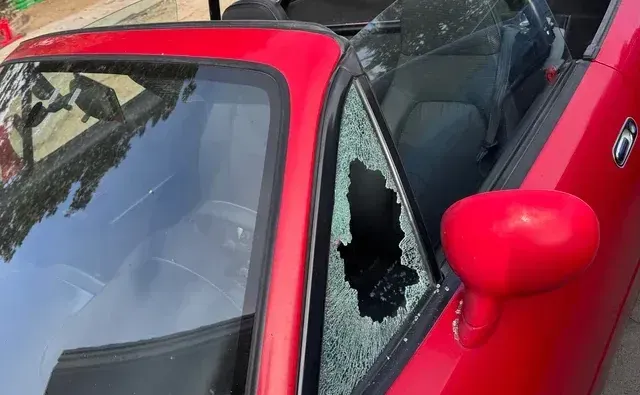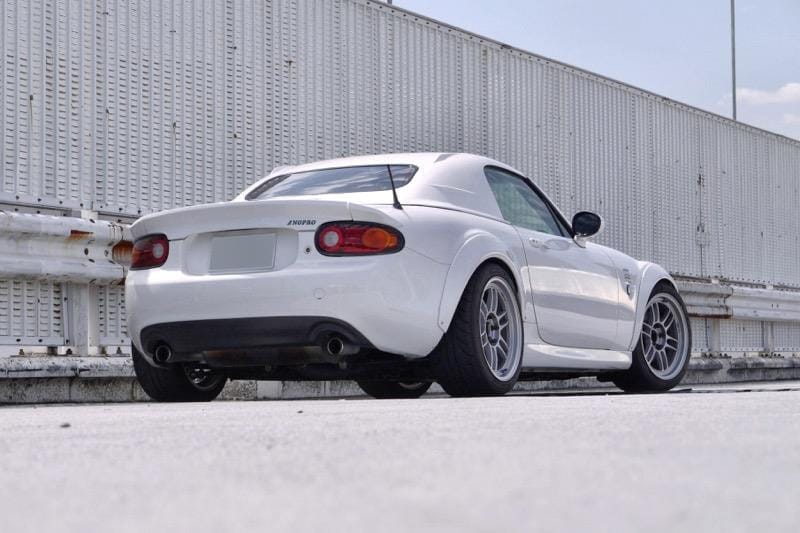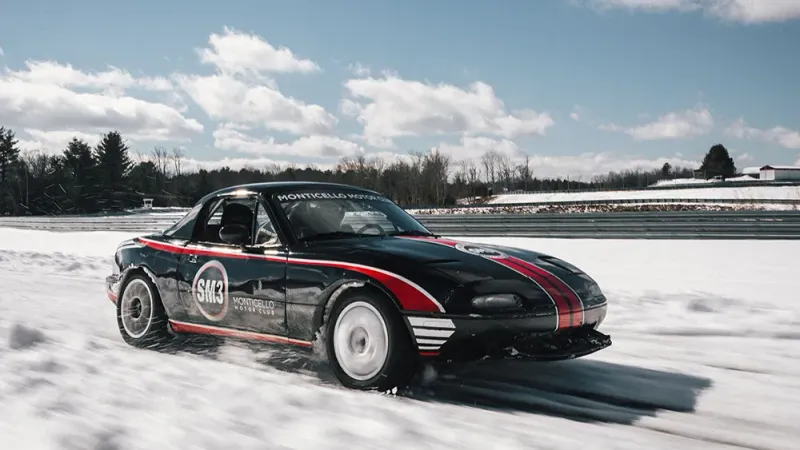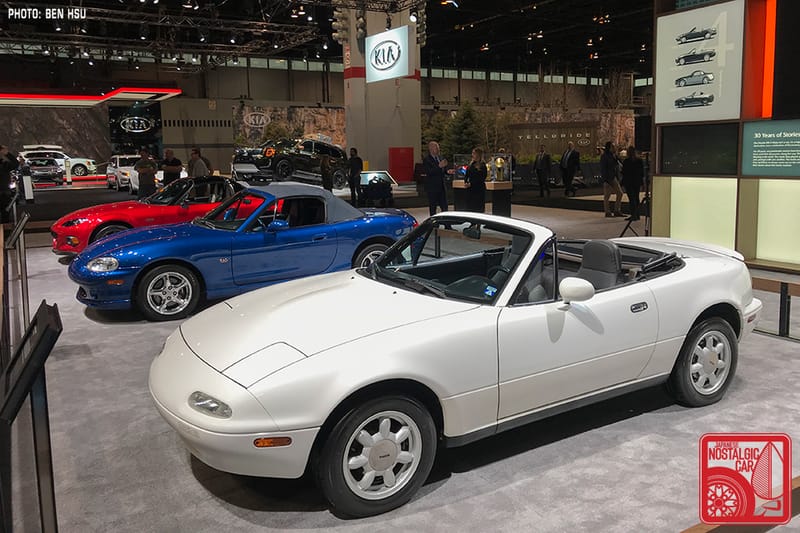Building a “K-Miata”
For linear, reliable power and Honda durability, the K24 swap is the ultimate naturally aspirated Miata build. Engineered kits now solve geometry, mounts, wiring, and ECU hurdles for NA/NB and NC chassis. Expect $10–15K in parts plus tuning and labor.
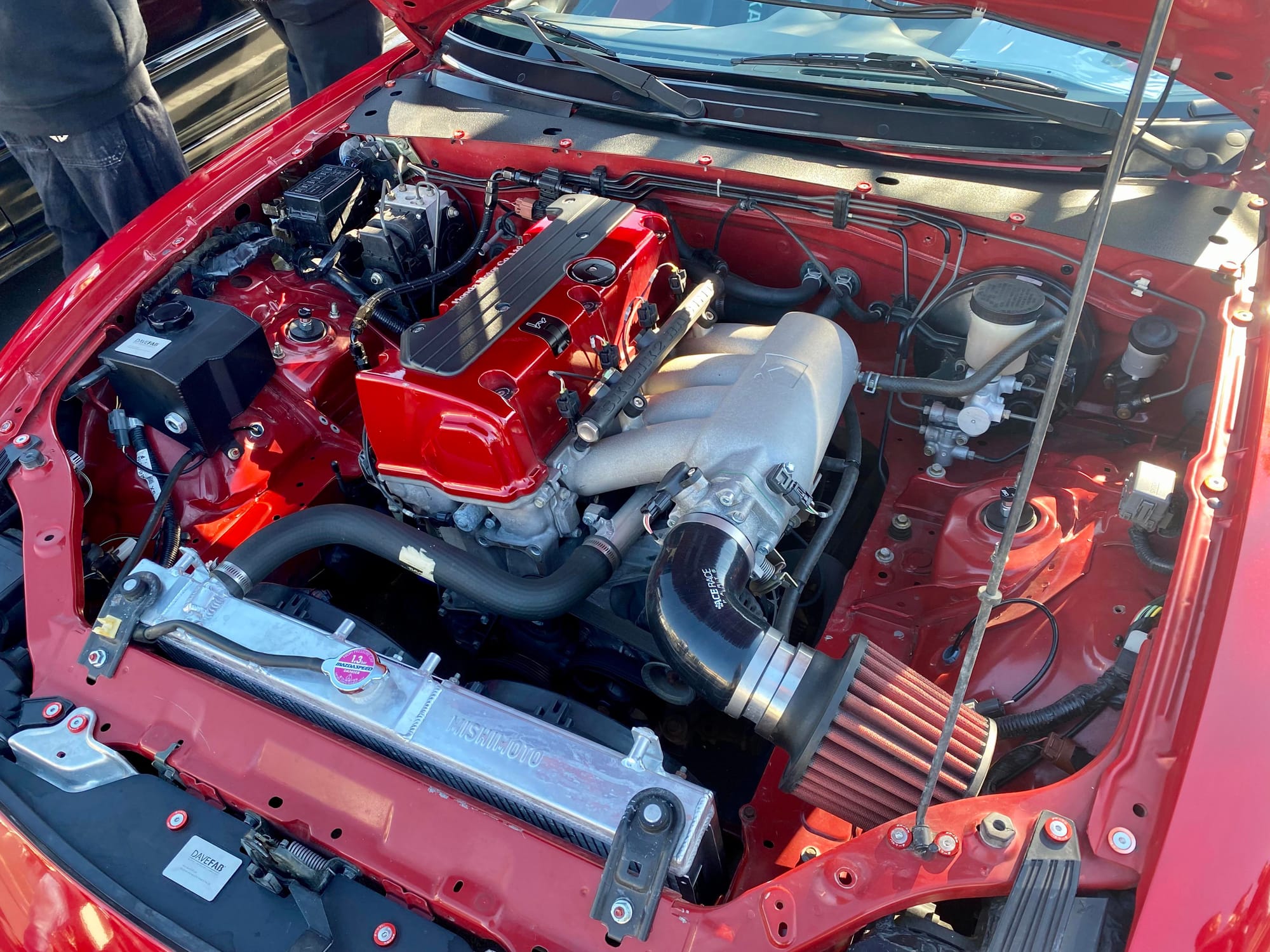
If you want reliable, linear power with Honda K-series durability and a lighter Miata nose, a K24 swap is the cleanest naturally aspirated route. With today’s engineered kits for NA/NB and NC, the hard problems, subframe geometry, mounts, oiling, intake, header, wiring, and ECU, are already solved. Plan roughly 10–15k USD in parts for a DIY build depending on chassis and options, plus tuning and any shop labor. Be upfront about legality: these swaps are sold for off-road motorsports use only.
What You Actually Gain With a K24
On a stock K24A2 long-block with a 50-degree VTC gear, the common result with intake, header, and a proper tune is around 220–230 wheel horsepower and 180+ lb-ft at the wheels, with rev limits often set near 8,200 rpm for track use. The driving character is classic naturally aspirated, instant throttle, a broad midrange, and an eager top end, without turbo heat or lag. Packaging is tidy: the NA/NB K24A2 “Ultimate” kit preserves factory steering geometry and trims a bit of nose weight, while the NC package feels the most OEM thanks to its integrated ECU, harness, and power-steering retention.

“K-Miata” began as a community K-swap effort and evolved into KPower Industries, which now offers complete, engineered packages for NA/NB (1990–2005) and NC (2006–2015) Miatas. You’re not cobbling together a one-off. The kits include the big hardware pieces, bolt-in tubular subframes, mounts, a proper rear-wheel-drive oil pan and pickup, a 4-2-1 header, and a rear-drive intake manifold. For electronics, NA/NB owners can use a turnkey standalone ECU and harness package, while NC owners get a true plug-and-play electronics bundle with a base calibration, retaining the NC transmission and hydraulic power steering.
The Key Caveats
Legally, these parts are labeled for off-road motorsports use only. If you must pass emissions inspections, treat that as a hard constraint. Mechanically, the K20 Type-S oil pump conversion is mandatory to fit the rear-drive oil pan and to safeguard the engine at high rpm. On NA chassis, the K24 is roughly half an inch taller than a K20, so it will not clear a stock hood without a modified or baffled valve cover or bodywork.
Which K24 Should You Choose?
The K24A2 from the 2004–2008 Acura TSX (and the equivalent JDM K24A RBB) is the go-to. In stock form it is the strongest of the common K24s, and with the typical supporting parts and 50-degree VTC, it reliably delivers that 220–230 whp outcome. The K24Z3 from the 2009–2014 TSX is also supported for NA/NB via Basic and Ultimate hardware packages; it uses different ancillaries, but the kit accounts for those differences.

OEM and Aftermarket Bits Still Source
You will need the K20 oil pump conversion to physically fit the rear-drive pan and to run reliably at high rpm. Depending on your ECU strategy, you may need an 02–04 RSX engine and starter harness, or you can go fully standalone with the kit’s harness solutions. Plan on the correct starter and alternator for your engine and harness, a 50-degree VTC gear on K24A2, a fresh timing chain tensioner, and other common service items. Follow the kit’s planning guidance for throttle choice (cable versus DBW), injectors, and fuel system plumbing.
Hidden Costs and Common Trip-Ups
On NA chassis, plan for hood clearance solutions when using a K24, most builders use a modified or baffled valve cover. Budget realistically for fuel system plumbing, because return versus returnless changes your regulator and line strategy. Be decisive about electronics; the modern turnkey route for NA/NB is a standalone ECU and a dedicated swap harness. For cooling, many builders step up to an aluminum radiator once they start tracking. Finally, if you anticipate future boost, plan the driveline now, this is where the BMW ZF conversion earns its keep. Shop time varies with chassis condition and options. Use the parts totals above as your baseline, then get local quotes for installation and dyno calibration. Even with a base map, plan on professional tuning if you track the car or want everything dialed.

Pros and Cons
On the plus side, a healthy stock K24A2 with the right supporting parts and tune will land in the 220–230 whp range while keeping the car naturally aspirated, responsive, and friendly on track. The kits deliver engineered fitment with proven parts, and the NC solution in particular drives like something Mazda could have built, thanks to the plug-and-play electronics and retained power steering. On the downside, emissions legality is the elephant in the room, the upfront cost can rival or exceed a mild turbo path, the NA hood requires attention with a K24, and long-term gearbox life becomes a question if you add significant torque later, hence the ZF option.
How It Compares to a Turbo BP
A mild, street-friendly turbo on a Miata’s original engine often makes 200-plus wheel horsepower at low boost and can cost the same or less than a full K-swap, depending on the kit and supporting mods. In some markets, certain turbo kits carry emissions approvals, which simplifies registration and inspections. The character trade-off is simple: the K-swap gives you naturally aspirated immediacy, 8k-rpm zing, and a lighter nose; the turbo gives you a bigger midrange shove, a different sound and feel, and potentially an easier legal path. Choose based on how and where you drive.
Installation Overview
Start with chassis prep and the bolt-in subframe and mounts. Convert the K24 to the K20 Type-S oil pump, then install the rear-drive pan and pickup. Fit the rear-drive intake manifold and your chosen throttle (cable or DBW), then install the 4-2-1 header and build or bolt on a 3-inch exhaust. Plumb the cooling system using the chassis-specific coolant neck and appropriate hoses, and consider an aluminum radiator for heavy use. Set up the fuel system according to your generation’s layout, size injectors properly, and route clean, safe lines. Wire the standalone ECU and swap harness, or plug in the NC kit’s harness, then address the driveline choice, stock Miata gearbox for NA power levels or a BMW ZF conversion if you want future torque headroom. Finish with first-start procedures and a proper dyno tune.
Sourcing a K24
Right now, K24A2 and JDM K24A RBB long-blocks commonly list between roughly 999 and 1,600 USD, with K24Z3 engines in a similar band. Prices swing with mileage, included accessories, and region. When shopping, ask for compression and leak-down numbers, inspect the timing chain tensioner condition, plan to use a 50-degree VTC gear on K24A2, and verify alternator, water-pump housing, and harness compatibility with your chosen electronics path.

Who Should (and Shouldn’t) Build One
Track-day NA/NB owners who crave NA response with real top-end should go K24A2 Ultimate plus standalone ECU and a 3-inch exhaust; with the right diff ratio, it is a sweet, heat-resistant package. NC owners who want a near-OEM experience should choose the Complete kit with air-conditioning and a 3-inch exhaust; the integrated electronics and power-steering retention make the car feel factory-finished. If you know you’ll chase big torque later, plan the BMW ZF driveline early. If emissions compliance is non-negotiable where you live, consider a compliant turbo route instead.
If the idea of a Miata that simply does more everywhere, without losing its NA soul, appeals to you, a K24-swapped NA/NB or NC is a terrific answer. Today’s kits take care of the engineering heavy lifting; your job is to budget honestly, choose the right engine and electronics strategy, solve the NA hood clearance if applicable, and follow through with a clean install and professional tune. Build it right and you get an OEM-feeling package with grown-up power, track stamina, and that signature Miata light-nose agility.

